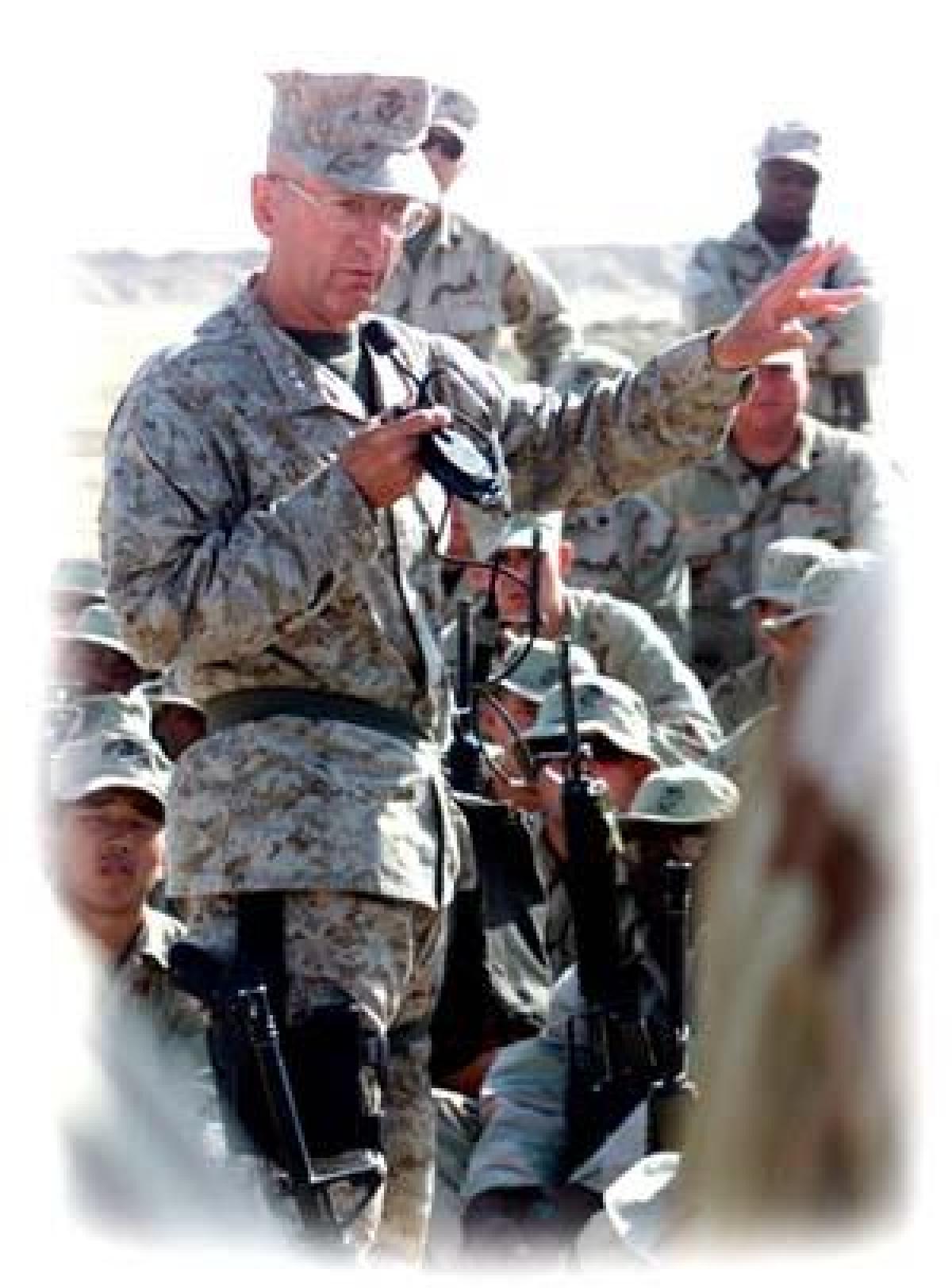Retired Marine Major General Ray Smith and I accompanied the First Marine Division (1stMarDiv) to write a book about its fight from Kuwait to Baghdad. Over the course of 1,100 kilometers we shifted among 18 units that engaged in combat on 16 days. Most officers will participate in major theater wars only a few times in their careers. When a once-in-a-decade war such as Iraqi Freedom occurs, it is wise to compare the operational experience with written theories such as network-centric warfare.
The I Marine Expeditionary Force (I MEF) was comprised of a logistics support group, an air wing, and three major ground maneuver units: 1stMarDiv, a separate brigade-size force from the Second Marine Division called Task Force Tarawa, and British units totaling more than a division. All Marine units were a mixture of active-duty and reserve forces. Task Force Tarawa and the British were assigned to control the south of Iraq, while the 1stMarDiv marched on Baghdad. As things turned out, either the Army's Fifth Corps (the main effort) or I MEF (the supporting effort) could have taken Baghdad alone, such was the traumatizing effect on the Iraqi military of tactical air and the Abrams tank.
Several observations follow from this short recapitulation of the march up to Baghdad. First, maneuver warfare was conducted by issuing mission-type orders, under which the commander states why a mission is to be accomplished but does not dictate how the mission is to be carried out tactically. Before the war, General Mattis had shared his plan with the entire division; every Marine knew the basic scheme and the intent. In prewar meetings, the three regimental commanders repeatedly went over their routes and objectives. Once the war got rolling, each regimental commander operated on his own; General Mattis or his deputy, Brigadier General John Kelly, would drop in on a regiment every two days or so. The battalions were equally independent. The distances were too vast, helicopter availability at the distant fronts too scarce, and the queues on the few roads too long for centralized control.
This is not an argument for Luddite revisionism. Digital connectivities were the communications backbone for coordinating fires beyond the fire support coordination line. The MEF was shaping the battlefield in front of the division, a task made much easier by digital connections. After the war, when the division transitioned to stability operations, digital connectivities from the division to battalions with headquarters in five cities 50-100 kilometers away played a key role.
Network centricity, however, is of limited utility in a ground war until there is digital connectivity down to at least the rifle company and individual combat patrol. The Army's blue force tracker points the way toward all vehicle locations being shared digitally, as well as succinct reporting by text, and voice radio is the primary link among the fighters in those vehicles during engagements.
If senior joint and corps-level staffs keep their hands off the battlefield and issue only brief mission-type orders, then the size and the communications budgets of those staffs can be reduced. Too much network-centric digital money goes to senior headquarters while the fighters struggle with voice radios. Full fielding for a "dismounted" rifleman to carry a lightweight digital device with acceptable battery endurance is years away and very expensive. Until it is deployed, ground warfare will feature two distinct communications paths: voice at the battalion level and below, where the fight takes place, and digital plus voice at the division level and above.
Even with digital connectivity down to the fighting level, the concept of network centricity is suspect if the underlying model envisions all stations reporting so the captain can fight the ship. The wisdom of flowing information from higher-level intelligence assets to a central fusion center and then down to the tactical units is questionable. Of the four critical junctures faced by 1stMarDiv in Iraqi Freedom, better digital connectivity would have reduced the confusion at Nasariah, where an A-10 attacked Marine amtracs and where senior commanders had only periodic contact with their rifle companies. Network centricity would have played a minor role at the other three junctures: whether to halt in the desert, whether to charge 110 kilometers up to Baghdad, and whether to raid versus seize the city.
Maneuver warfare and mission-type orders worked. It is time to review the critical decisions made during Iraqi Freedom and ask which systems and which associated network-centric concepts would have improved which decision, at what cost, and who pays for it.
F. J. Bing West, a former Assistant Secretary of Defense, is most recently the coauthor, with Major General Ray L. Smith, U.S. Marine Corps (Retired), of The March Up: Taking Baghdad with the 1st Marine Division (New York: Random House, 2003).





